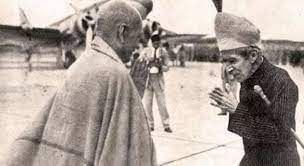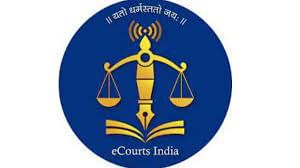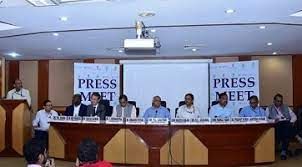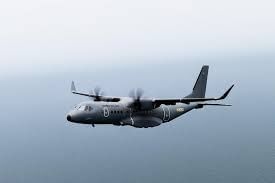UPSC Daily Current Affairs- 14th September 2023 | Current Affairs & Hindu Analysis: Daily, Weekly & Monthly PDF Download
Morocco
Subject: Geography

Why in News?
The Moroccan media reported damage in many parts of Morocco including the city of Marrakesh due to the recent Earthquake.
Background:-
- At least 1,037 people have been killed and 672 people injured in the 6.8 earthquake.
- The epicenter was in the High Atlas Mountains, 71 kilometres (44 miles) southwest of Marrakesh.
- The quake was felt in Marrakesh, Rabat, Casablanca, and several other areas.
- Moroccan media reported that the 12th-century Koutoubia Mosque in Marrakech, one of the city’s most famed landmarks, suffered damage.
- Marrakech is the chief city of central Morocco.
- The ancient section of the city, known as the medina, was designated a UNESCO World Heritage site in 1985.
About Morocco:-
- Location: Western North Africa.
- Boundary: Algeria to the east and southeast, Western Sahara to the south, the Atlantic Ocean to the west, and the Mediterranean Sea to the north.
- It is the only African country with coastal exposure to both the Atlantic Ocean and the Mediterranean Sea.
- Strait: It lies directly across the Strait of Gibraltar from Spain.
- National languages of Morocco: Arabic.
- Climate: Mediterranean climate, with mild wet winters and hot dry summers.
- Mountain Ranges: The Atlas Mountains dominate the central part of the country, while the Rif Mountains make up the northern edge.
- Jebel Toubkal is the highest point in Morocco at 13,664 ft (4,165 m) and is also the highest peak of the Atlas Mountains.
- Seismic Activity:- It lies along the boundary of the African and Eurasian tectonic plates.
- These two massive plates interact, and their movements can result in seismic activity.
About Earthquake:-
- An earthquake is an intense shaking of the Earth’s surface.
- The shaking is caused by movements in Earth’s outermost layer.
- The Earth is made of four basic layers: a solid crust, a hot, nearly solid mantle, a liquid outer core, and a solid inner core.
- The solid crust and top, stiff layer of the mantle make up a region called the lithosphere.
- It’s actually made up of tectonic plates which are constantly shifting as they drift around on the viscous, or slowly flowing, mantle layer below.
- This non-stop movement causes stress on Earth’s crust.
- When the stresses get too large, it leads to cracks called
- When tectonic plates move, it also causes movements at the faults.
- An earthquake is the sudden movement of Earth’s crust at a fault line.
- Hypocentre/Focus: The point where the energy is released.
- Epicentre: The point on the surface directly above the focus.
- Isoseismic line: A line connecting all points on the surface where the intensity is the same.
Causes of Earthquakes:-
- Fault Zones
- Plate tectonics
- Volcanic activity
- Human-Induced Earthquake
Types of Earthquakes:-
- Tectonic Earthquakes: These are caused by the movement of the tectonic plates along the fault line.
- Volcanic Earthquake: Earthquakes produced by stress changes in solid rock due to the injection or withdrawal of magma (molten rock) are called volcano earthquakes
- Human-Induced Earthquakes: In areas of intense mining activity, sometimes the roofs of underground mines collapse causing minor tremors.
- These are called collapse earthquakes.
- Ground shaking may also occur due to the explosion of chemical or nuclear devices.
- Such tremors are called explosion earthquakes.
Source: The Hindu
Analysing the Global Stocktake Report
Subject: Climate Change

Why in News?
Amid the gathering of world leaders in New Delhi for the G-20 summit, the UN climate secretariat unveiled a ‘synthesis report’ summarizing progress made by nations towards the goals of the 2015 Paris Agreement.
- Known as the ‘global stocktake,’ this report is a vital component of global climate action, assessing efforts to combat climate change every five years.
Understanding the ‘Global Stocktake’
(1) Origins and Purpose:
- The ‘global stocktake’ is integral to the Paris Agreement, which commits countries to limit global warming to below 2 degrees Celsius and strive for a 1.5-degree target.
- Its primary aim is to periodically review and evaluate individual nations’ efforts in reducing greenhouse gas emissions and transitioning to renewable energy sources.
(2) Influence on Climate Talks:
- The inaugural report, released this year, carries significant weight, shaping discussions at the upcoming 28th UN Climate Conference of Parties (COP) in Dubai in November.
- While countries have submitted their Nationally Determined Contributions (NDCs) for climate action, the stocktake encourages them to enhance their ambitions before the next NDCs in 2025.
Key Insights from the Report
(1) Overall Assessment:
- The 45-page synthesis report delivers 17 key findings that collectively convey that the world is falling short of its Paris Agreement targets. However, it highlights a narrowing window of opportunity for countries to align their efforts.
(2) Echoing Previous Concerns:
- The report echoes concerns raised in the 2022 UN synthesis report, which analyzed the NDCs of 166 countries and found them inadequate to meet Paris Agreement goals.
- It reiterates the findings of the United Nations Emissions Gap Report, emphasizing the vast shortfall in reducing CO2 emissions compared to the Paris targets.
Crucial ‘Key Findings’
(1) Galvanized Global Response:
- The Paris Agreement has spurred countries to set climate goals and acknowledge the urgency of addressing the climate crisis.
- Governments must support the transition away from fossil fuels, ensuring it is equitable and inclusive.
(2) Ambitious Goals:
- Much greater ambition is needed to achieve global greenhouse gas emission reductions of 43% by 2030 and 60% by 2035, leading to net-zero CO2 emissions by 2050.
(3) Renewable Energy Transition:
- Scaling up renewable energy is imperative, while unabated fossil fuels must be phased out rapidly.
(4) Environmental Conservation:
- Efforts to halt deforestation, reverse land degradation, and promote emission-reducing agricultural practices must be encouraged.
(5) Adaptation and Loss Management:
- Comprehensive risk management and support for impacted communities are essential for averting, minimizing, and addressing loss and damage due to climate change.
(6) Financial Commitment:
- Transparent adaptation reporting and the rapid scaling up of financial support are needed to align global financial flows with climate-resilient development.
Influence on Global Climate Discussion
- The global stocktake report serves as a foundational document for the upcoming UN Climate Conference of Parties (COP).
- It notably influenced the G20 Leaders Declaration, which officially acknowledged the substantial financial requirements for transitioning to a renewable energy economy.
- This acknowledgement sets the stage for intensified efforts, emphasizing the need for trillions of dollars to support climate action, renewable technologies, and the path to net-zero emissions by 2050.
Source: The Hindu
Operation Polo: Integrating Hyderabad – 75 Years On
Subject: Modern History
Why in News?
September 13, 2023, marks the 75th anniversary of Operation Polo, a significant military action undertaken by the Indian Army in 1948 to integrate the princely state of Hyderabad.
- This operation, also known as the “Police Action,” led to the Nizam of Hyderabad’s forces surrendering to the Indian Army by September 18, 1948.
- Understanding the background and events surrounding Operation Polo is essential to appreciate its historical significance.
Context of Operation Polo
(1) The Nizam’s Stand:
- The Nizam of Hyderabad, Mir Osman Ali Shah, was reluctant to join India or Pakistan after India’s Independence in 1947.
- He exploited the diversion of Indian resources towards the Kashmir conflict, signing a standstill agreement with India in November 1947, maintaining the status quo in Hyderabad.
(2) Growing Tensions:
- Hyderabad, a populous and prosperous state in the Deccan, was predominantly Hindu but administered by Muslim rulers.
- The state had no common border with Pakistan, yet the Nizam sought amicable relations with Pakistan.
- The Nizam’s forces, especially the Razakars, escalated tensions with their actions, including cross-border raids and overtures to Pakistan.
The Military Campaign: Operation Polo
(1) Hyderabad’s Forces and Situation:
- Hyderabad’s military consisted of approximately 25,000 troops, with limited training and readiness.
- The Razakars, though numerous, posed a minor military challenge.
(2) Indian Army’s Leadership:
- Major General Jayanto Nath Chaudhuri, the General Officer Commanding of 1 Armoured Division, led the Indian forces.
(3) Multi-Directional Offensive:
- The primary assault came from the west, led by 1 Armoured Division, supported by forces from the north, south, and east.
- Key elements included the Smash Force, Kill Force, and Vir Force in the western thrust.
- Additional thrusts were launched from Aurangabad, Jabalpur, and the eastern front.
- The southern thrust originated from Vijayawada.
Conclusion: Surrender and Significance
(1) Ceasefire and Surrender:
- The Nizam announced a ceasefire on September 17, 1948.
- On September 18, Major General Chaudhuri entered Hyderabad, and Major General El Edroos surrendered to him.
- Major General Chaudhuri was subsequently appointed as the Military Governor of Hyderabad.
(2) Honoring a Hero:
- Havildar Bachhitar Singh of 2 Sikh was posthumously awarded the first Ashoka Chakra of Independent India for his role in Operation Polo.
- He sacrificed his life on September 13, 1948, while advancing towards Naldurg, a part of Hyderabad state.
Source: The Hindu
What is the eCourts Project?
Subject: Polity

Why in News?
The Phase-III of the project – to be implemented over four years – will see digitisation of entire court records, both legacy and pending cases, at an estimated cost of ₹2,038.40 crore.
About eCourts Project:
- The eCourts Project was conceptualized on the basis of the “National Policy and Action Plan for Implementation of Information and Communication Technology (ICT) in the Indian Judiciary – 2005” submitted by eCommittee, Supreme Court of India, with a vision to transform the Indian Judiciary by ICT enablement of Courts.
- Ecommittee is a body constituted by the Government of India in pursuance of a proposal received from Hon'ble the Chief Justice of India to constitute an eCommittee to assist him in formulating a National Policy on computerization of the Indian Judiciary and advise on technological communication and management-related changes.
- It is a Pan-India Project, monitored and funded by the Department of Justice, Ministry of Law and Justice, Government of India for the District Courts across the country.
- The Project envisages:
- To provide efficient and time-bound citizen-centric service delivery.
- To develop, install and implement decision support systems in courts.
- To automate the processes to provide transparency in accessibility of information.
- To enhance judicial productivity, to make the justice delivery system affordable, accessible, cost-effective, predictable, reliable and transparent.
- The Phase I of eCourts was concluded in 2015, in which 14,249 Court sites were computerised. Under Phase II, 18,735 District and Subordinate courts have been computerised so far.
Major Initiatives Launched under the Project:
- Case Information Software (CIS) based on customised Free and Open-Source Software (FOSS) has been developed.
- National Judicial Data Grid (NJDG) is a flagship project launched in 2015 for monitoring the pendency and disposal of cases in HCs and Subordinate Courts.
- Virtual Courts (as of July 2022, there are 20 Virtual Courts in 16 States/UTs) and using Video Conferencing.
- An eFiling system has been rolled out for the electronic filing of legal papers with advanced features like online submission of Vakalatnama, eSigning, online video recording of oath, etc.
- eSewa Kendras: To make justice delivery inclusive and to mitigate handicaps caused by digital divide, eSewa Kendras have been rolled out to provide e-filing services to lawyers and litigants.
- National Service and Tracking of Electronic Processes (NSTEP) has been developed for technology-enabled process serving and issuing of summons. It has currently been implemented in 28 HCs.
- Secure, Scalable & Sugamya Website as a Service (S3WAAS) Website: A new divyang- friendly website in 13 regional languages to enable them to access the information using assistive technologies.
- IEC and Training: As part of the IEC campaign, several initiatives have been taken to educate the Judicial Officers, lawyers and public about the facilities available.
Phase III:
- The Phase III of the centrally sponsored project – to be implemented over four years – will see the digitisation of entire court records, both legacy and pending cases, at an estimated cost of ₹2,038.40 crore.
- It seeks to spruce up the digital infrastructure of courts by setting up 2500 new modern, virtual-friendly courts, establishment of 1150 virtual courts, and 4,400 eSewa kendras in all court complexes.
- Around 3,108 crore documents will be digitised as part of the project.
Source: Hindustan Times
First Global Symposium on Farmers' Rights
Subject: Government Initiatives

Why in News?
President Droupadi Murmu inaugurated the First Global Symposium on Farmers’ Rights in New Delhi recently.
About First Global Symposium on Farmers’ Rights:-
- Venue: ICAR Convention Centre, National Agricultural Science Centre, New Delhi.
- Date: September 12 to 15, 2023.
- Historical Background: The proposal to hold the first GFSR was mooted by the Government of India at the Ninth Session of the Governing Body (GB9) of the International Treaty on Plant Genetic Resources for Food and Agriculture (International Treaty) held in India in September 2022, which was agreed by the FAO.
- Organized by: Secretariat of the International Treaty on Plant Genetic Resources for Food and Agriculture (International Treaty) of the Food and Agriculture Organization (FAO), Rome.
- Hosted by: Ministry of Agriculture and Farmers Welfare, Government of India, in collaboration with the Protection of Plant Varieties and Farmers’ Rights (PPVFR) Authority, Indian Council of Agricultural Research (ICAR), ICAR-Indian Agricultural Research Institute (IARI), and ICAR-National Bureau of Plant Genetic Resources (NBPGR).
- Objective: to address critical issues related to farmers’ rights and their essential role in global food security and agriculture.
- Eminent scientists and resource persons will participate from 59 countries across the globe.
- They will deliberate on how to recognize and reward the enormous contribution that local and indigenous communities and farmers of all regions of the world have made to the conservation and development of plant genetic resources (PGR).
Key Agendas:-
- Focus on Farmers’ Rights: The symposium places a strong emphasis on farmers’ rights as its central theme.
- Proposal for Future Work: Participants engage in discussions and deliberations aimed at formulating proposals for future work.
- Knowledge and Awareness: An essential outcome of the symposium is the promotion of knowledge and awareness regarding farmers’ rights among its participants.
- Sharing Best Practices: The symposium serves as a valuable platform for stakeholders to share best practices, experiences, and lessons learned related to farmers’ rights.
- The interconnectedness of Farmers’ Rights and Human Rights: Recognizing that farmers’ rights are intrinsic to human rights underscores their significance within the broader context of agriculture and farming.
Source: AIR
Kisan Credit Card (KCC)
Subject: Economy
Why in News?
The Union Minister of Fisheries, Animal Husbandry and Dairying, chaired a National KCC Conference recently, to boost Kisan Credit Card (KCC) saturation among animal husbandry and dairy farmers.
Background:-
- The government in 2018-19 extended the Kisan Credit Card (KCC) facility to fisheries and animal husbandry farmers to help them meet their working capital requirements.
- The Ministry of Fisheries, Animal Husbandry and Dairying in association with the Department of Financial Services, has been organizing various campaigns since June 2020 to provide Kisan Credit Card facilities to all eligible Animal Husbandry and Fishery farmers.
- More than 50,000 animal husbandry farmers virtually attended through 1,000 common service centers across the country.
About Kisan Credit Card (KCC):-
- Ministry: Ministry of Fisheries, Animal Husbandry and Dairying.
Historical Background:-
- The scheme was introduced in 1998 for providing adequate and timely credit support from the banking system, under a single window and simplified procedure to the farmers.
- The scheme was further extended for the investment credit requirement of farmers viz. allied and non-farm activities in the year 2004.
- In the Budget-2018-19, the government announced the extension of the facility of Kisan Credit Card (KCC) to fisheries and animal husbandry farmers to help them meet their working capital needs.
Objectives:-
- To meet the short-term credit requirement for cultivation.
- To manage post-harvest expenses.
- To meet the consumption requirement of the farmer’s household.
Implementing Agencies:-
- Commercial Banks
- Regional Rural Banks (RRBs)
- Small Finance Banks
- Cooperatives
Salient Features of Kisan Credit Card:-
- The KCC offers a number of features, including an ATM-enabled RuPay Card, one-time documentation, built-in cost escalation in the limit, and any number of withdrawals within the limit.
- In 2004, the program’s eligibility was expanded to include farmers’ needs for investment credit for non-farm and related activities.
- KCC provides for post-harvest expenses, produce marketing loans, household consumption needs for farmers, etc.
- The repayment period is decided on the basis of the harvesting of the crop and its marketing period.
- The maximum limit for a short-term agriculture loan is up to 1 year and for a long-term loan is 5 years.
- Moreover, banks can extend the tenure/duration of the loan at their discretion.
- To ensure the availability of agricultural credit at a reasonable cost of 7% per annum to farmers.
- The government of India implements an interest subvention scheme of 2% for short-term crop loans up to Rs. 3 lakh.
- In addition, the GOI provides interest subvention of 2% and a prompt repayment incentive of 3% to the farmers.
- Farmers are charged a simple interest rate when they make prompt payments.
- Compound interest is charged when cardholders fail to make timely payments.
Benefits:-
- The Interest rate offered on the loan may go as low as 2.00%.
- Banks will not seek security on loans up to Rs. 1.60 lakh.
- Crop insurance coverage against a variety of calamities is given to the users.
- Farmer is provided insurance coverage against permanent disability, death, and other risks is also provided to the farmer.
Source: PIB
C-295 Transport Aircraft: All you need to know
Subject: Security Issues

Why in News?
In a significant milestone, the Indian Air Force (IAF) received its inaugural C-295 transport aircraft during a ceremony held in Seville, Spain.
- IAF’s fleet of C-295s is set to become the largest globally, with an initial order for 56 aircraft.
About C-295
- The C-295MW is a transport aircraft with a carrying capacity ranging from 5 to 10 tonnes.
- It can accommodate up to 71 troops or 49 para-troopers, offering significant flexibility.
- The aircraft boasts a maximum cruise speed of 260 knots, ensuring rapid deployment.
- Its exceptional low-level flight characteristics enable tactical missions, even at slow speeds as low as 110 knots.
- The C-295 is equipped with a rear ramp door, facilitating swift troop and cargo deployments.
- Each aircraft is outfitted with an indigenous Electronic Warfare Suite developed by Bharat Electronics Ltd and Bharat Dynamics Limited.
- Two Pratt & Whitney Canada PW127G turboprop engines propel the aircraft.
- The C-295 exhibits short take-off and landing (STOL) capabilities, enabling the use of unprepared airstrips.
Significance of the aircraft
- India’s entry into aircraft production will place it among a select group of nations with the capability to manufacture C-295 aircraft.
- This group includes countries like the US, UK, Russia, France, Italy, Spain, Ukraine, Brazil, China, and Japan.
- The project will stimulate India’s aerospace ecosystem, involving numerous MSMEs across the country in the manufacturing of aircraft components.
- This includes areas of strategic importance, such as the border with China and the Andaman and Nicobar archipelago.
Source: The Hindu
India vs. China in Smartphone Manufacturing
Subject: Economics

Why in News?
India’s smartphone manufacturing industry has reached a noteworthy milestone with the production and launch of the iPhone 15.
- This development raises the question of whether India is on the path to becoming a rival to China in smartphone manufacturing.
- While India has made substantial progress, certain factors still set it apart from China.
Why discuss this?
- India has become the second largest mobile-producing nation as locally made mobile phone shipments crossed the 2 billion cumulative mark in the 2014-2022 period, registering a 23% growth compounded annually, according to a new report.
- The ramp up in local manufacturing came on the back of huge internal demand, increasing digital literacy, and government push.
A Shift in iPhone Manufacturing
(1) Historical Context:
- iPhones have been assembled in India since 2017.
- Previously, India’s assembly lines lagged behind global launches.
(2) The iPhone Breakthrough:
- India’s Foxconn plant in Chennai produced the iPhone 15 a month before its global launch.
- This signifies India’s transition into a parallel manufacturing market alongside China.
Comparing India and China
(1) Not Yet Equals:
- India’s achievement is commendable, but it hasn’t completely caught up with China.
- Base iPhone 15 assembly takes place in India, while Pro iPhones are still produced elsewhere.
- Established supply chains in China pose a challenge for India.
(2) The Challenge of Supply Chains:
- Supply chain operations in India aren’t as seamless as in China.
- Bridging this gap is expected to take at least two more years.
Understanding Smartphone Manufacturing in India
(1) High-Level Assembly:
- Key components like cameras, displays, and chips are imported.
- India primarily serves as a high-level assembly destination.
- In contrast, China’s fabs (chip and display plants) provide a manufacturing advantage.
(2) Skill Development:
- Smartphone manufacturing has become highly automated.
- India’s workforce is being upskilled to operate sophisticated assembly lines.
- Supply chain considerations impact Apple’s decision to not assemble Pro iPhones in India.
Pricing Dynamics and Future Prospects
(1) Pricing Paradox:
- India isn’t inherently a cheaper manufacturing destination compared to China.
- Apple’s iPhone sales in India are growing, potentially by nearly 40%.
- Apple doesn’t need to lower prices due to continued growth.
(2) Potential Price Revisions:
- India experiences a pricing disparity compared to the US and UAE.
- Price revisions may become necessary once iPhone shipments exceed 10 million units annually.
India’s lacunae
(1) High-End Manufacturing:
- India aspires to host high-end smartphone and electronics manufacturing.
- However, this goal is distant due to the country’s limited volume in this segment.
- To make this transition viable, firms would need to export around 500 million units annually, a target that seems distant.
(2) Semiconductor Fabrication:
- Semiconductor fabrication, a critical aspect of electronics manufacturing, remains outside India’s grasp.
- Moving semiconductor fabrication to India isn’t currently feasible for companies due to the lack of scale and infrastructure.
Conclusion
- India’s ascent in smartphone manufacturing, exemplified by the production of the iPhone 15, is a significant achievement.
- While challenges remain, such as supply chain scale and workforce upskilling, India’s progress underscores its potential to compete with China in the future.
- As smartphone sales continue to surge, pricing dynamics and local manufacturing may undergo further transformations, benefiting both the industry and consumers.
Source: Mint
|
63 videos|5397 docs|1142 tests
|





















